
Figuring out how to land your first job in tech can be overwhelming. Fortunately, Flatiron School Career Services is here to help.
When you enroll in one of our career-changing bootcamps, you’ll be paired with an experienced career coach. Not only will you learn the technical skills you need in the bootcamp, but you’ll also work 1-on-1 with an experienced coach — for up to 180 days after graduation.
By working with a career coach, students have the opportunity to build their personal brand and learn strategies to stand out as a job candidate. Your coach will guide you through the job search — tailored to your unique goals — from start to finish. They’ve got you covered from resumes, to mock interviews, digital networking strategies, and career transition tools.
To get tips for your job search, we went to the source — one of our Flatiron School career coaches, Beanie Brady.
Beanie Brady is a part-time career coach at Flatiron School. With prior experience in the tech field and as a victim advocate and Volunteer Director in the non-profit sector, when Beanie found Flatiron School, she knew it was the perfect fit. Expanding on her past experiences, she is now using both her subject matter expertise and coaching skills.
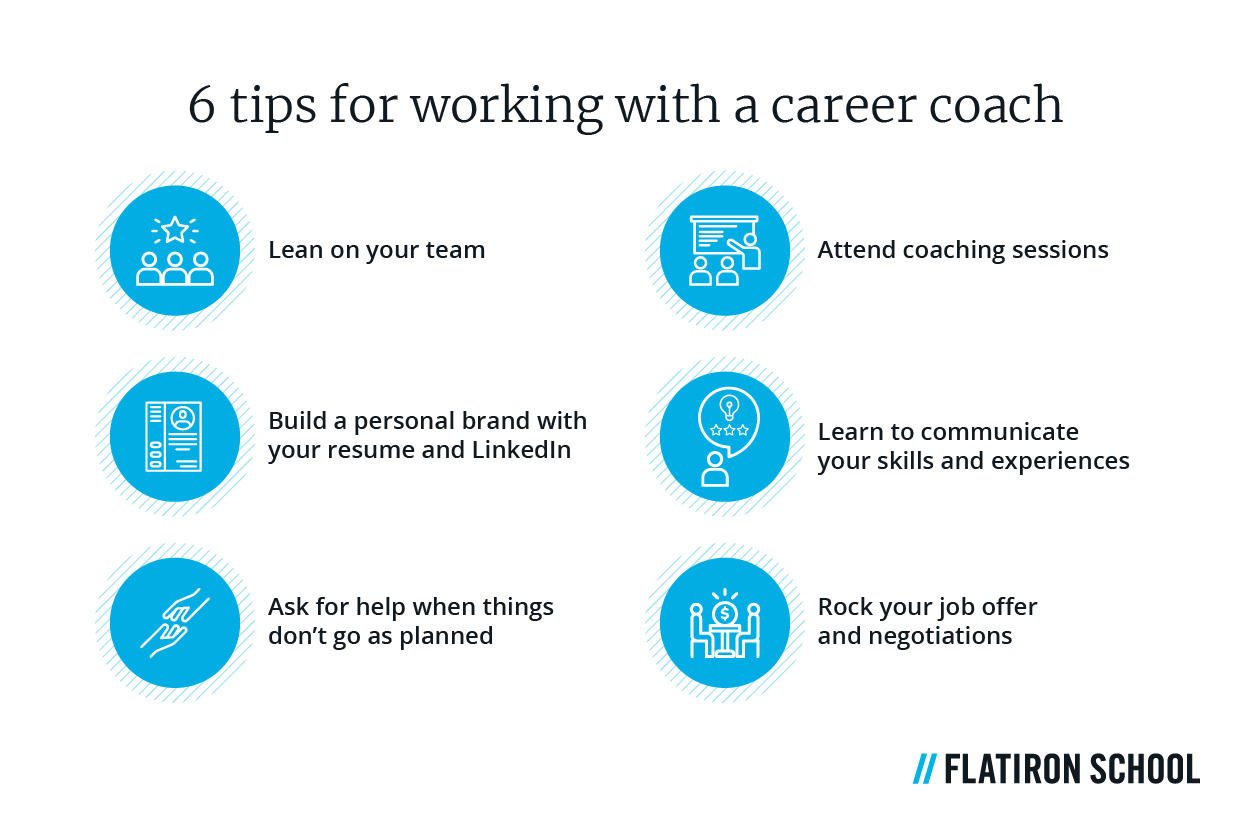
6 tips for working with a career coach
Once you’ve completed your bootcamp, you’re ready to start the next step of your journey: your job search. Here are the top six things you can do to become job and interview ready with the help of a 1-on-1 career coach – according to Beanie.
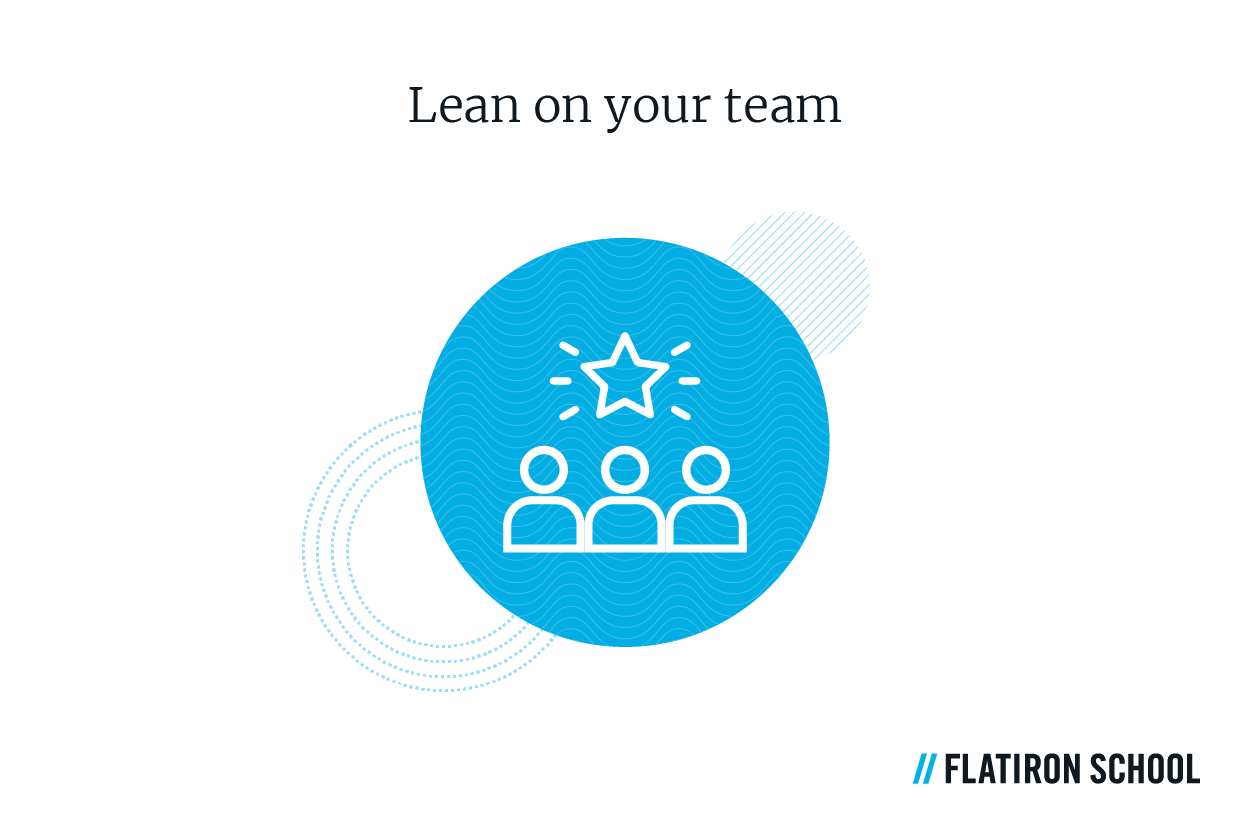
1. Lean on your team
Before you finish the bootcamp program, you will start meeting with your career coach regularly. During this time, it can be helpful to think of you and your career coach as a team.
You get 1-on-1 coaching, plus “you also get the expertise of a team — the 60 plus coaches at Flatiron School — that comes from a huge variety of backgrounds,” says Beanie. From HR and higher education, to former military and a speech and debate coach, you’re well taken care of when it comes to coaching.
In fact, former students say the consistent meetings with their coaches is a key factor in their success.
Beanie recalls one of her former grads, Marissa. “It was just a joy [to work with her] because it really felt like we were working together as a team and that I was supporting her job search with her firmly in the driver’s seat.”
Marissa always put her best foot forward – coming prepared, communicating via email, and asking questions. When Marissa did her job as a team player, Beanie was best able to do her job as a coach.
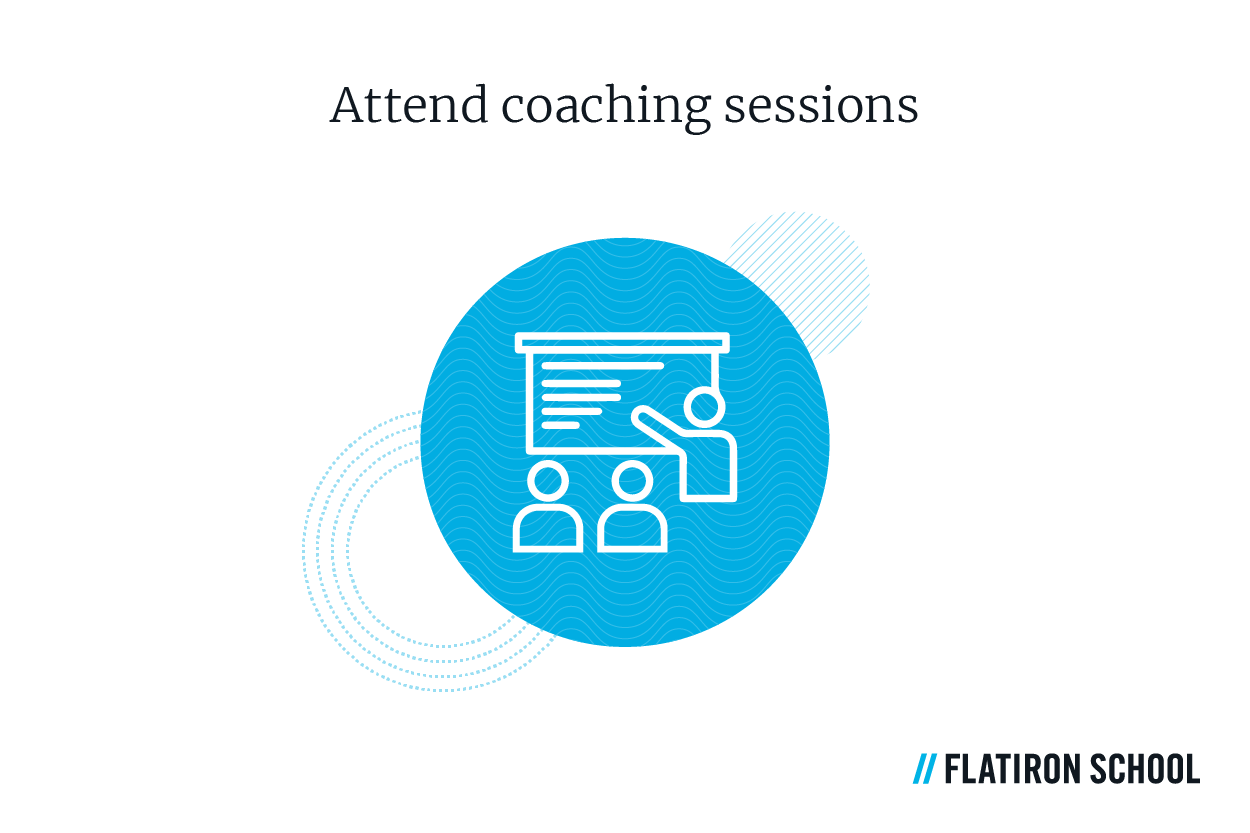
2. Attend coaching sessions
“We talk a lot about the metaphor of [the student] being in the driver’s seat of their job search, and as the coach we’re kind of in that navigation seat,” Beanie says.
To navigate the career search, coaches and students first meet for a kickoff meeting. In this casual meeting, you and your coach will get to know each other.
Since you are in the driver’s seat, the kickoff meeting is your chance to give your coach a road map. Where would you like to go? Where have you been? Right away, your coach will begin strategizing. It’s their job to listen to you, analyze your background and experiences, and point out different routes and improvements for your job search.
After that initial meeting, you will continue to work together through various structured sessions, including resume reviews, personal branding, mock interviews, networking, and more.
Since working with a career coach is a two-way street, make the most of your sessions by showing up prepared. Follow the career prep curriculum, and complete any pre-work in advance of scheduled sessions. In other words, check the map before you start driving.
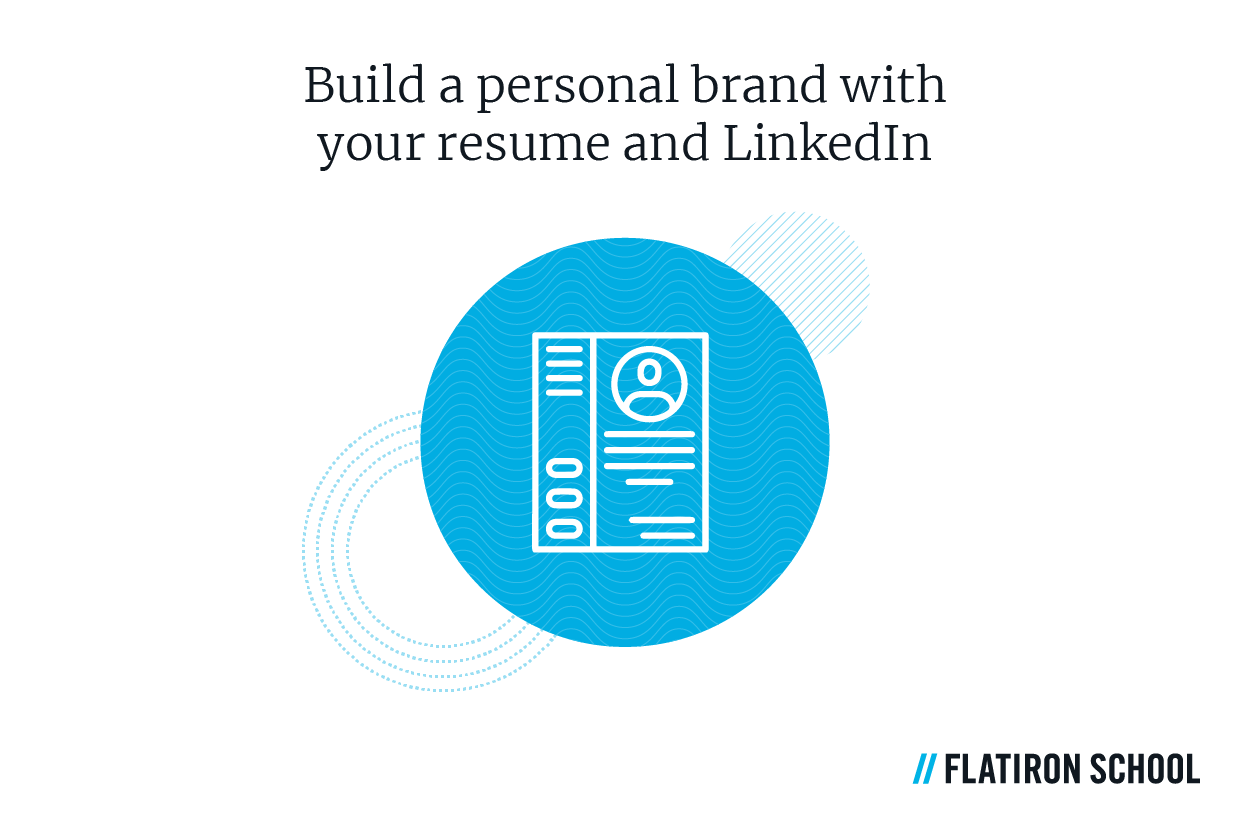
3. Build a personal brand with your resume and LinkedIn
When starting your career search, work on the logistical pieces first. This means getting your resume and LinkedIn profiles in check.
Your resume should be polished and look sharp, and your coach will be there to assist you with that. Check that the links are working. “I always say today’s broken links are yesterday’s typos,” says Beanie.
Since two eyes are better than one, your coach can look over your resume for you. The resume session is where the coach-student team rolls up their sleeves and gets to work. Be sure to take advantage of the opportunity.
Unlike traditional career services at a university, the 1-on-1 coaching at Flatiron School is really tuned into students’ individual needs. By listening to you, your coach will help tailor your resume to your personal goals. So, whether it's a geographic specific search or translating prior skills, your career coach is there to help you get a job that fits your goals.
Since LinkedIn and social networking is a key component to the job search these days, you will also work on personal branding. Cover photo, profile photo, and profile all play a key in landing a job through this platform.
Now, some worry that their past experience is either a hindrance or not translatable to tech. In reality, a strong professional background can actually help you stand out. Your career coach will show you how to market your prior skills and experiences on LinkedIn.
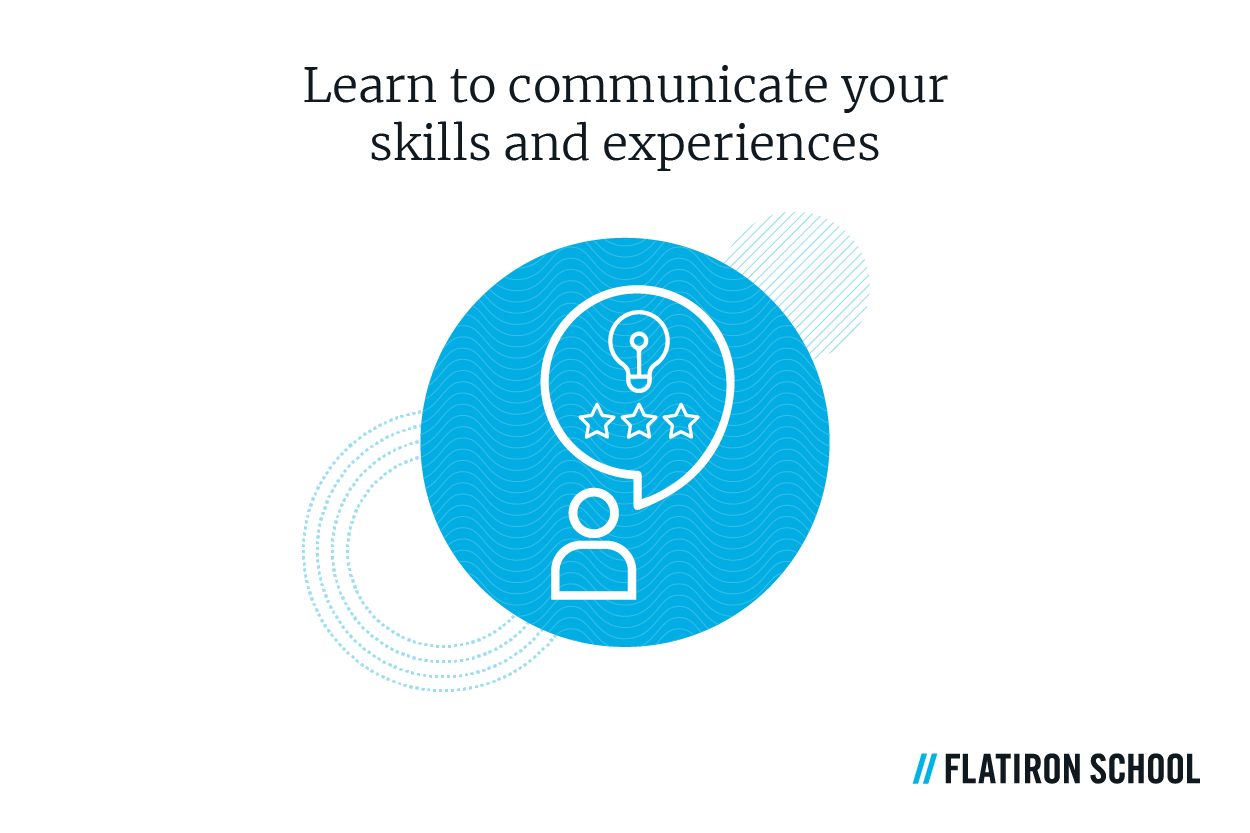
4. Learn to communicate your skills and experiences
Interestingly, one of Beanie’s favorite aspects of her job is mock interviews to prepare grads for real life interviews. She likens it to coaching sports, “If you think of the interview as, ‘this is the game’ or ‘this is the play,’ you’ve [practiced], now get out there and put it on the field.”
So, how can your coach help you win the game?
At Flatiron School, you’ll have the opportunity to do mock interviews. Through the process, you’ll receive feedback on your answers, practice interview techniques, and learn how to prep for interviews.
First, you’ll do a mock HR interview with your coach acting as a hiring manager.
Your coach will provide feedback on how to communicate in a clearer way. Beanie says, “I’m not a coder. I’m not a cybersecurity person. So, how do you communicate technical concepts to a nontechnical person?” When talking with HR, it’s important to be able to talk about your projects in a non-technical way.
As for your professional story, Beanie likes to use the metaphor of a braid: braiding yourself and your values with the company — their goals and values. Beanie asks, “How do you take all these technical skills that you’ve just learned, combine them with your background and experience and your soft skills of communication, of collaboration, of leadership to tell the story of yourself as a candidate for that role at that company?”
That’s what she helps students do. Students also practice using the language of the company to show their values alignment and the star method (Situation, Task, Action, Response) to answer interview questions.
You’ll also have the opportunity to do a mock technical interview. This is crucial in order to get over the stress of the mock technical interview and get the sense of what one will be like.
Fortunately, you can practice your responses and techniques you’ve learned in coaching in your mock interviews. Then, you’ll be prepared when it’s time to get in the game for real.
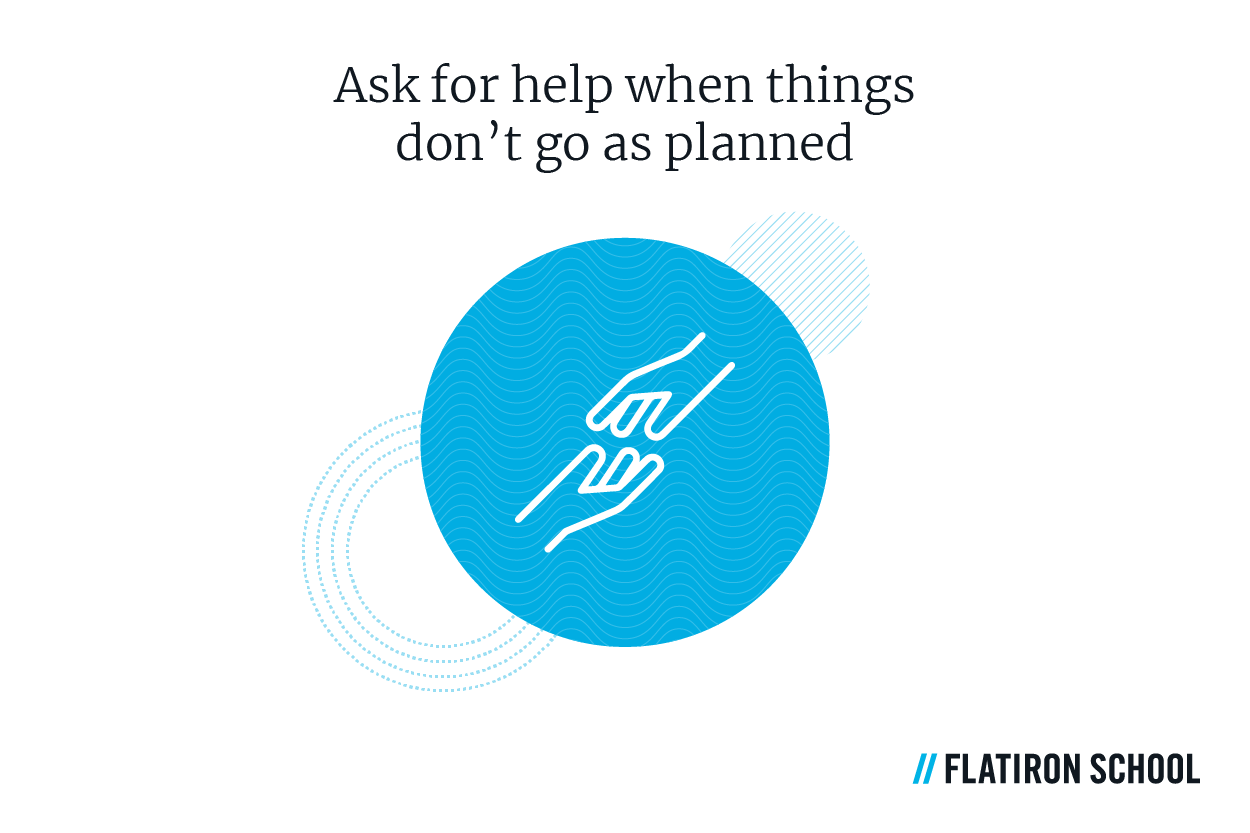
5. Ask for help when things don’t go as planned
When it comes to working with a career coach, you will be supported through it all. As much as family and friends can listen and be a sounding board, coaches can offer even more support. As a bonus, they also understand the marketplace so they can give you the best advice.
To best utilize the time with your coach, let them know what’s going on. They are there for the ups and downs of job searching and can help to normalize the job search. Everybody becomes frustrated or disappointed at some point as offers are withheld, withdrawn, and candidates feel led on.
It’s normal to become upset by these sorts of situations. According to Beanie, when you are frustrated in the job search it’s good to give people the benefit of the doubt. Additionally, it is helpful to remember to not take things personally.You just never know what someone is going through or what the company dynamics are.
Coaches and students also brainstorm ideas of how to stand out. Being visible and competitive in your job search can help you get a job. From posting on LinkedIn to doing above and beyond projects, such as value add slide decks, there are things every job seeker can do to stand above the rest.

6. Rock your job offer and negotiations
When you’re in the bottom of the ninth inning, a simple follow up email after an interview may not seem so simple after all.
Thankfully, your career coach helps with things like how to reach out on LinkedIn, cover letters, and thank you notes. Often students are so overwhelmed, they forget these minor details that can make a difference.
Beanie says that coaches are trained on strategies involving the job offer — what to say, how to counter, how to research, etc.
For example, one of her students was entertaining a verbal offer. After they gave her the annual salary, it wasn’t exactly what she wanted. They asked for a counter. Beanie helped her put together a deck showing a counter offer that aligned with company values — and she got the offer she wanted.
From beginning to end, your coach is there to help you with all the details.
Finals tips from a career coach
Getting your first job in tech can be a challenge. Luckily, all students in our career-changing bootcamps have the opportunity to work 1-on-1 with a career coach.
What’s more, students often say that the coaching at Flatiron School is better than what they received in the university. From finishing your bootcamp to landing your first role, your coach will guide you with a personalized approach.
It’s up to you to do your part in the job search. Plus, communicate with your coach on a regular basis so they can support you through the process!
Learn more about the program at Flatiron School by scheduling a 10-minute chat with admissions or check out the curriculum.




